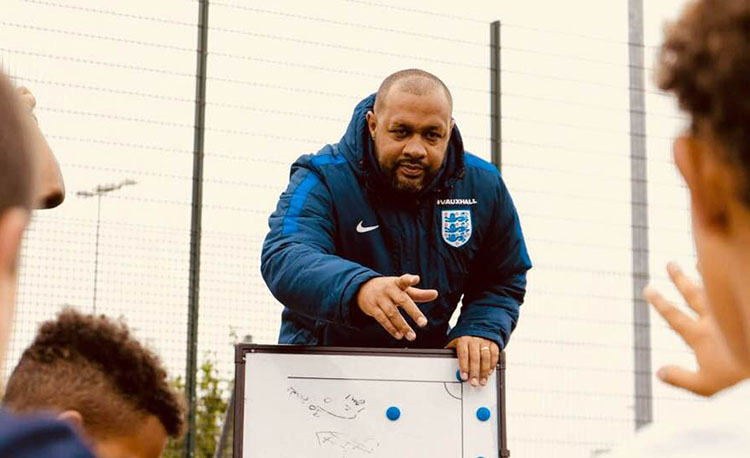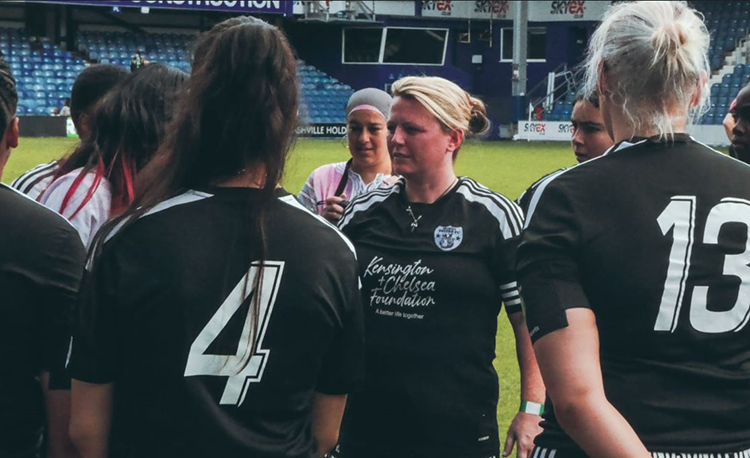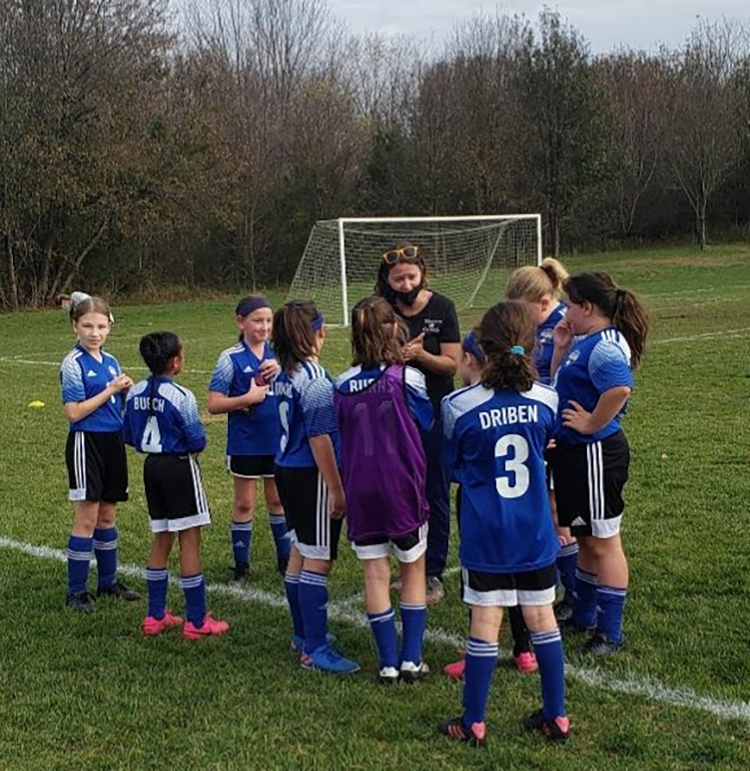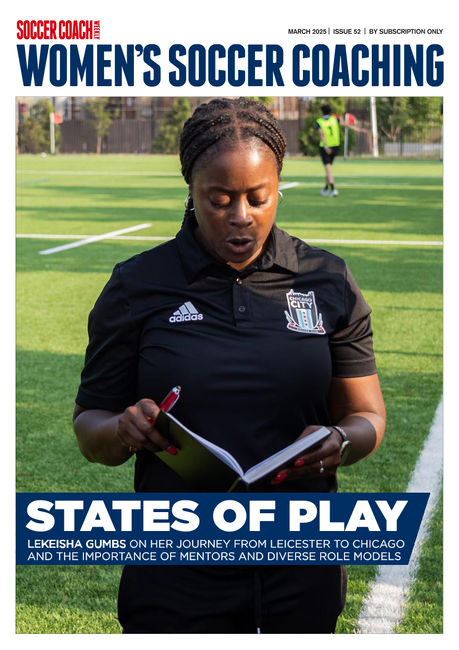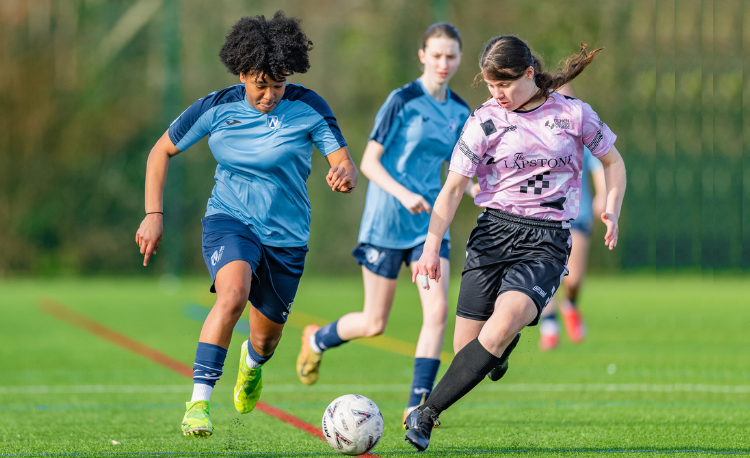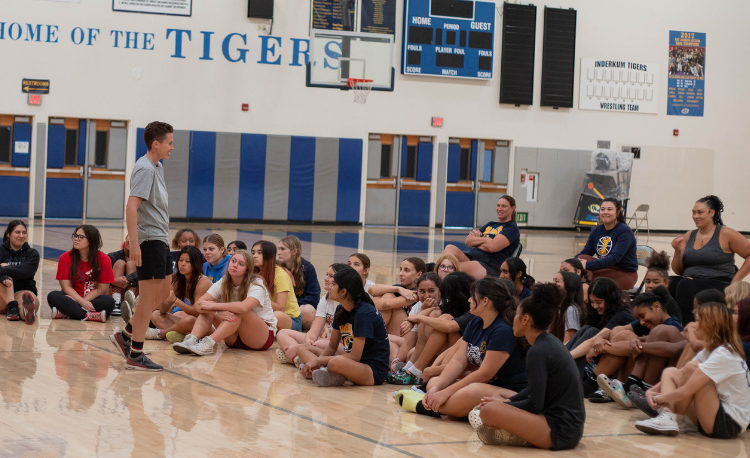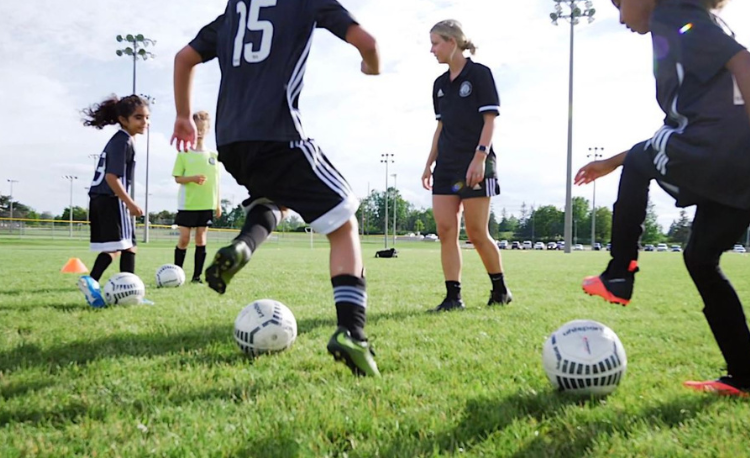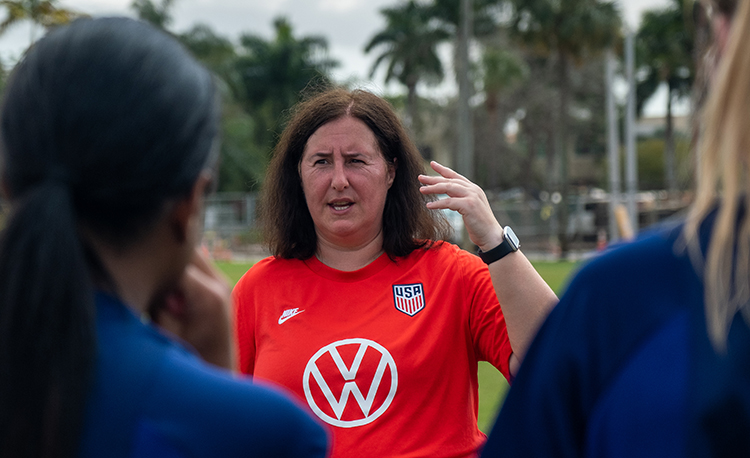You are viewing
1 of your 3 free articles
Your players and their mental health
Coaching Adviceby Mark Rivers
‘Connection before correction’ — FA coach developer and mental health instructor Mark Rivers says focus on the person first and players will flourish
Mental health is on a continuum and can fluctuate depending on life events and circumstances.
Individuals that have been diagnosed with a mental-health disorder can function extremely well, subject to the help and support they require.
However, the issue can sometimes be recognising the signs and symptoms that can cause mental ill-health and then having the confidence and self-awareness to seek assistance.
According to the mental-health charity Mind, one in four people in the UK will experience poor mental health, so there is a good chance it can affect ourselves or a loved one at some point.
As a football coach, and coach developer, of some 25 years, I have seen the stigma associated with mental health slowly start to dissolve over the years, but I am conscious that we still have a long way to go.
Individuals that have been diagnosed with a mental-health disorder can function extremely well, subject to the help and support they require.
However, the issue can sometimes be recognising the signs and symptoms that can cause mental ill-health and then having the confidence and self-awareness to seek assistance.
According to the mental-health charity Mind, one in four people in the UK will experience poor mental health, so there is a good chance it can affect ourselves or a loved one at some point.
As a football coach, and coach developer, of some 25 years, I have seen the stigma associated with mental health slowly start to dissolve over the years, but I am conscious that we still have a long way to go.
My experience
A passionate, heated dressing room was the last place I would have wanted to divulge any of my emotional difficulties. The toxic masculinity and ‘man up’ culture of male stereotypes put paid to that.
As the social psychologist Erving Goffman suggested, life is like a performance, with individuals showing a ‘front stage’ version of themselves. The version everyone expects to see. The version that means you are available to join in with the dressing-room antics.
It is also the version that can leave you fatigued and extremely depleted of any energy way before kick-off. Maintaining this social identity does not translate when we talk about physical health.
“Coaches must be able to recognise the signs of poor mental health...”Looking through the lens of Goffman, I realise now that I would have been demonstrating a front stage version of myself, a version that would allow me to fit in, one that would allow me some form of social currency in discussions and team talks. This allowed me to create the façade that I knew more than I did.
I think it is a must that coaches have the ability to recognise the signs and symptoms of poor mental health in our players, as we would with a physical injury.
Ten years ago, one of my players broke their tibia and fibula. As soon as I heard the horrendous sound, I knew there was nothing in my first-aid bag that was going to be of any use at that moment. However, I knew to support the player and reassure them while calling for an ambulance.
To me, mental health should not be too dissimilar. Having the ability and foresight to spot the warning signs, and creating the right environment which allows the players to feel comfortable to share what is on their mind, should be paramount.
Dealing with our players as ‘Jack and Jo’s before ‘Xs and O’s should play a huge part in our planning process for both training and matchdays. Connection before correction and seeing people before players should come top of the list. How do we check in with our players?
The work around the Polyvagal theory by Dr Stephen Porges - which suggests a third nervous system response, in addition to ‘flight or fight’ - really fascinates me, in terms of learning about players and their social engagement system. What would cause them to experience high anxiety levels in what should be a fun activity?
As a young player, I would often experience overwhelming anxiety if I did not understand what the coach wanted from me. I would stand at the back, out of the view of the coach, in case he picked on me to give an answer to a particular question.
Everything was conducted in an auditory fashion and as a visual/kinesthetics learner, I would have to wait and watch the rest of the group to gain an understanding of what was expected.
I know now that I was not within my social engagement system and that it was the coach’s responsibility to have drawn on a variety of different skillsets to create an environment that was conducive to me as a young, aspiring player.
Drawing on this experience has been hugely beneficial to me as a coach as a great deal of my holistic approach to coaching is based on empathy. An empathetic view allows the coach to focus on the person as an individual first before the player. I have a mental tick sheet that reads: How are they? How will I connect? Does the environment allow for their learning to take place? How do they best like to receive feedback? What coaching styles and interventions will work with them? And so on.
Checking in with your players and trying to recognise any signs and symptoms of poor mental health should be standard practice and a non-negotiable in my opinion.
But, if asking the ‘how are you?’ question, it needs to be approached with sincerity and we must be prepared to listen non- judgementally should they want to talk.
Our tone and body language should take precedence over the words used.
The barista at my local coffee shop will ask me every morning ‘How are you today?’, but it lacks conviction and sincerity which then prompts me to give the stock answer of ‘I’m fine, how are you?’. It becomes a standard transaction that lacks emotion.
In conclusion, I am extremely interested to learn of what contemporary methods coaches have in place when dealing with players’ mental health.
How do coaches connect before sessions? How do you get to know your players? How would you deal with any potential mental health concerns?
But however it’s done, let’s treat our players as people first, and create a really positive environment for them to learn, explore and flourish.
Case studies: coaching and coping during Covid-19
“Even though 2020 was a year filled with stress and anxiety, I found comfort through coaching my daughter’s U10s travel team.
“While coaching a team of eight and nine-year-old girls - many of whom were new to the sport - brought about its own stresses, sharing my love for the game made me feel like I had some control in a time that often felt out of control.
“Each hour spent at practice, at games, or even just prepping for practices, was time spent focusing on something normal. It was something I could manage during a year when feeling in control was far from normal.”
Related Files
WSC-006-your-players-and-their-mental-health.pdfPDF, 495 KB
LISA BURNS - COACH, VOORHEES MYSTICS, NEW JERSEY “Working in a nursing role during Covid-19 created a lot of emotions and stress. But coaching enhanced my mental and physical wellbeing by allowing me to express my true
emotions and build relationships. “Coaching is therapeutic,
reduces depression and lifts low moods. Inhaling air and releasing carbon dioxide relaxes the brain and reduces low moods, anxiety and stress.
“It also creates windows of opportunity that can only be good for your mental health. For me it contains enjoyment and freedom of expression but also has its challenges.”
TONY PALMER - TECHNICAL DIRECTOR, MANSFIELD TOWN LADIES
Further reading around mental health
FOOTBALL ASSOCIATION - Mental health and wellbeing
Includes a link to the FA’s mental health guide for coaches and managers.
www.thefa.com/football-rules-governance/inclusion-and-anti-discrimination/mental-health-and-wellbeing UK COACHING - Mental health awareness course for sport and physical activity
An online course incorporating learning activities, quizzes, case studies and videos to help you better understand mental health.
www.ukcoaching.org/courses/learn-at-home/mental-health-awareness-for-sport-plus FOOTBALL ASSOCIATION - Covid-19 and mental health
A collated list of links from various mental health charities and support organisations with advice and information about coping during a global pandemic.
www.thefa.com/news/2020/apr/07/heads-up-and-mental-health-during-coronavirus-080420 MIND - Support for coaches and physical activity providers
Three short films which offer advice and support for inclusive coaching.
www.mind.org.uk/about-us/our-policy-work/sport-physical-activity-and-mental-health/resources/coaches-page/
Newsletter Sign Up
Newsletter Sign Up
Discover the simple way to become a more effective, more successful soccer coach
In a recent survey 89% of subscribers said Women's Soccer Coaching makes them more confident, 91% said Women's Soccer Coaching makes them a more effective coach and 93% said Women's Soccer Coaching makes them more inspired.
*includes 3 coaching manuals
Get Inspired
All the latest techniques and approaches
Women's Soccer Coaching offers proven and easy to use soccer drills, coaching sessions, practice plans, small-sided games, warm-ups, training tips and advice.
We've been at the cutting edge of soccer coaching since we launched Soccer Coach Weekly in 2007, creating resources for the grassroots youth coach, following best practice from around the world and insights from the professional game.
